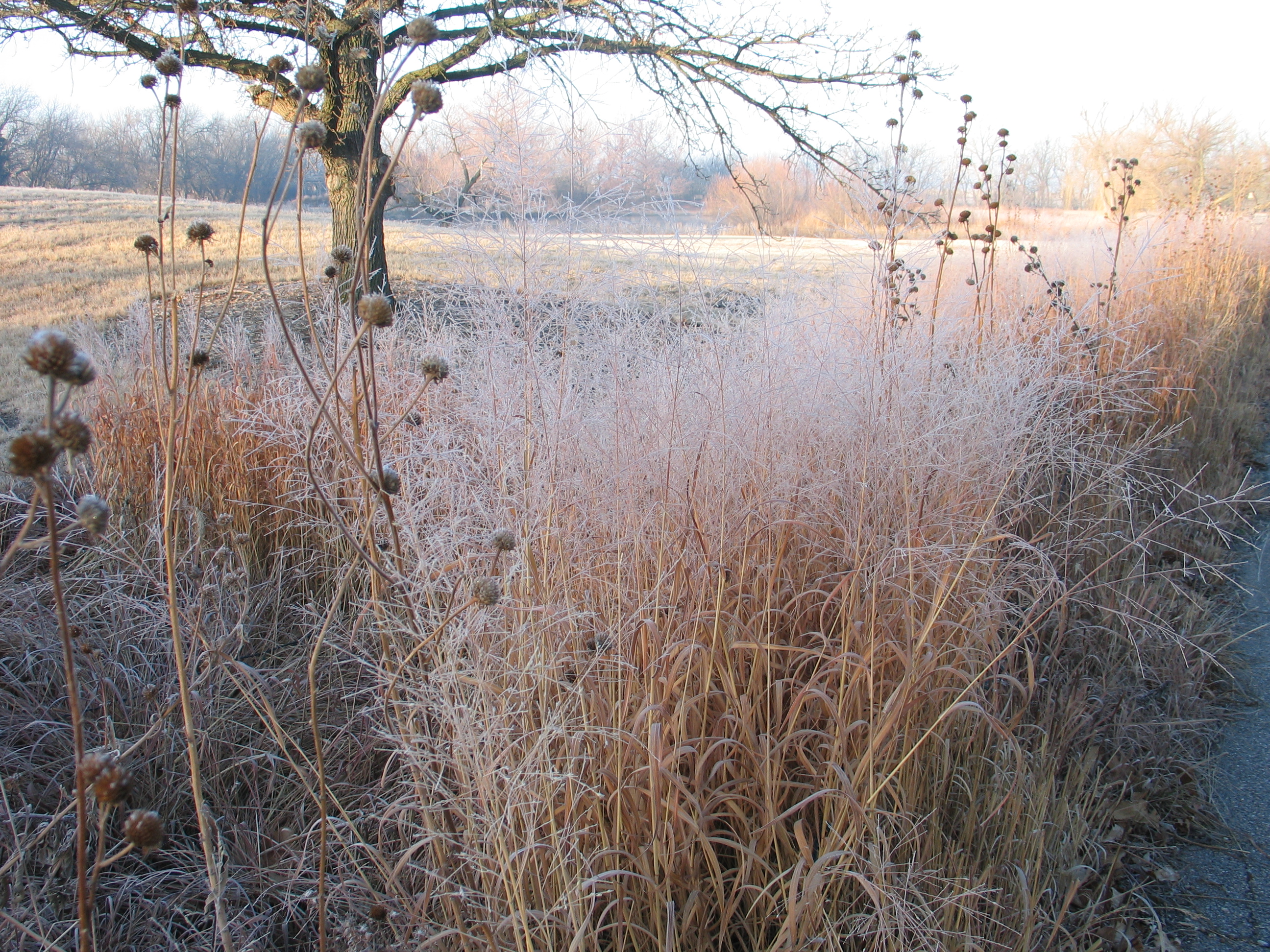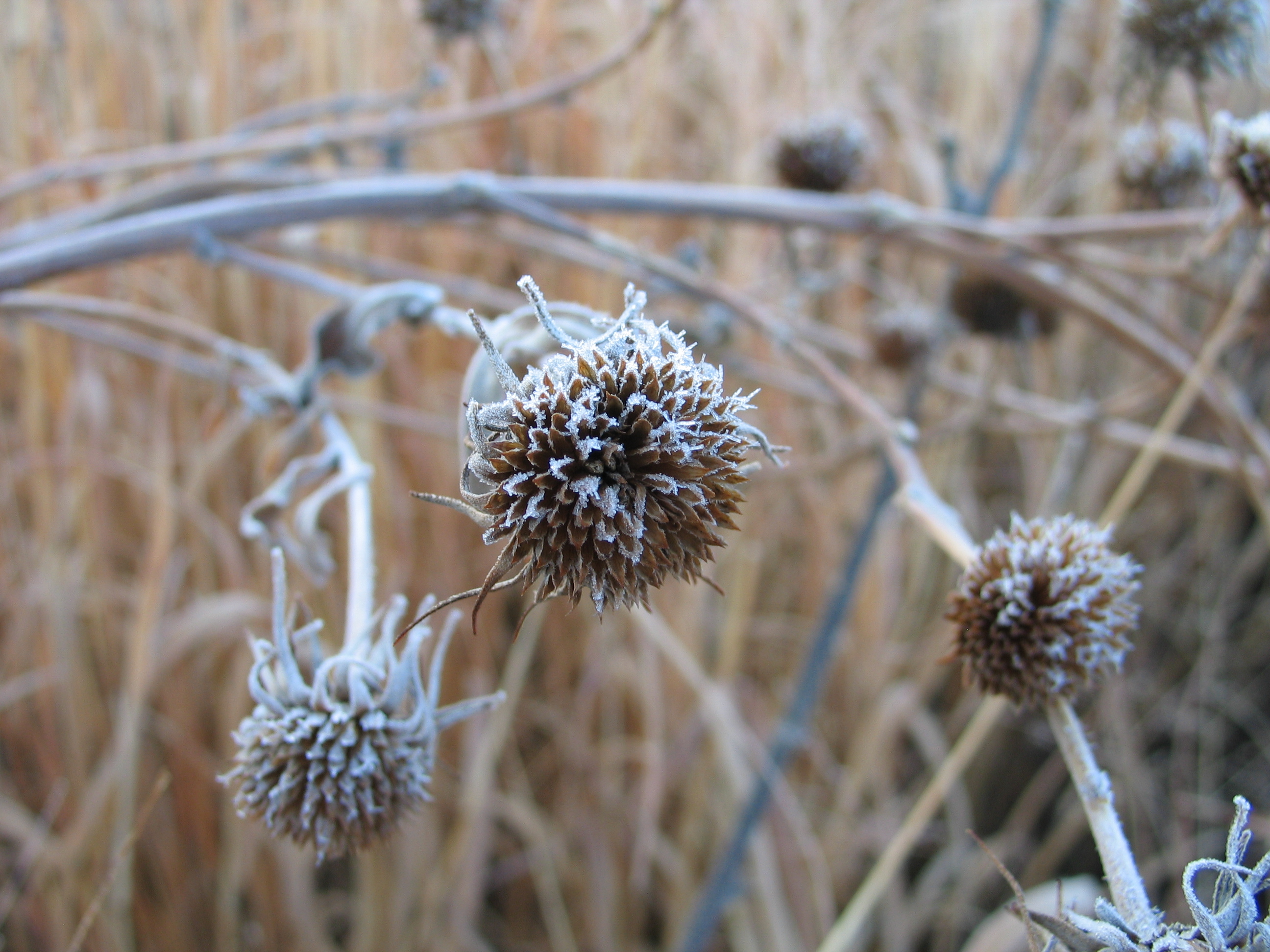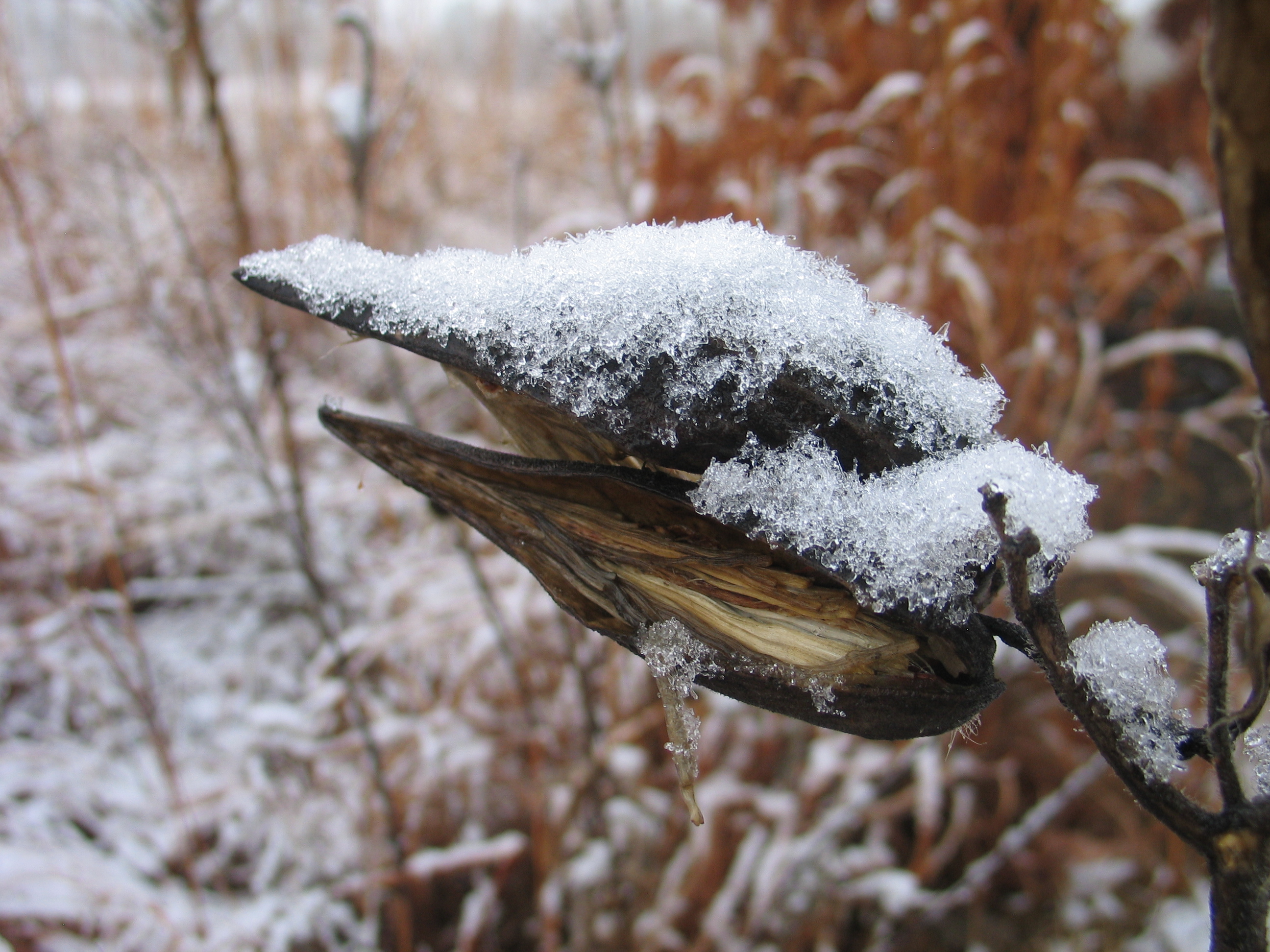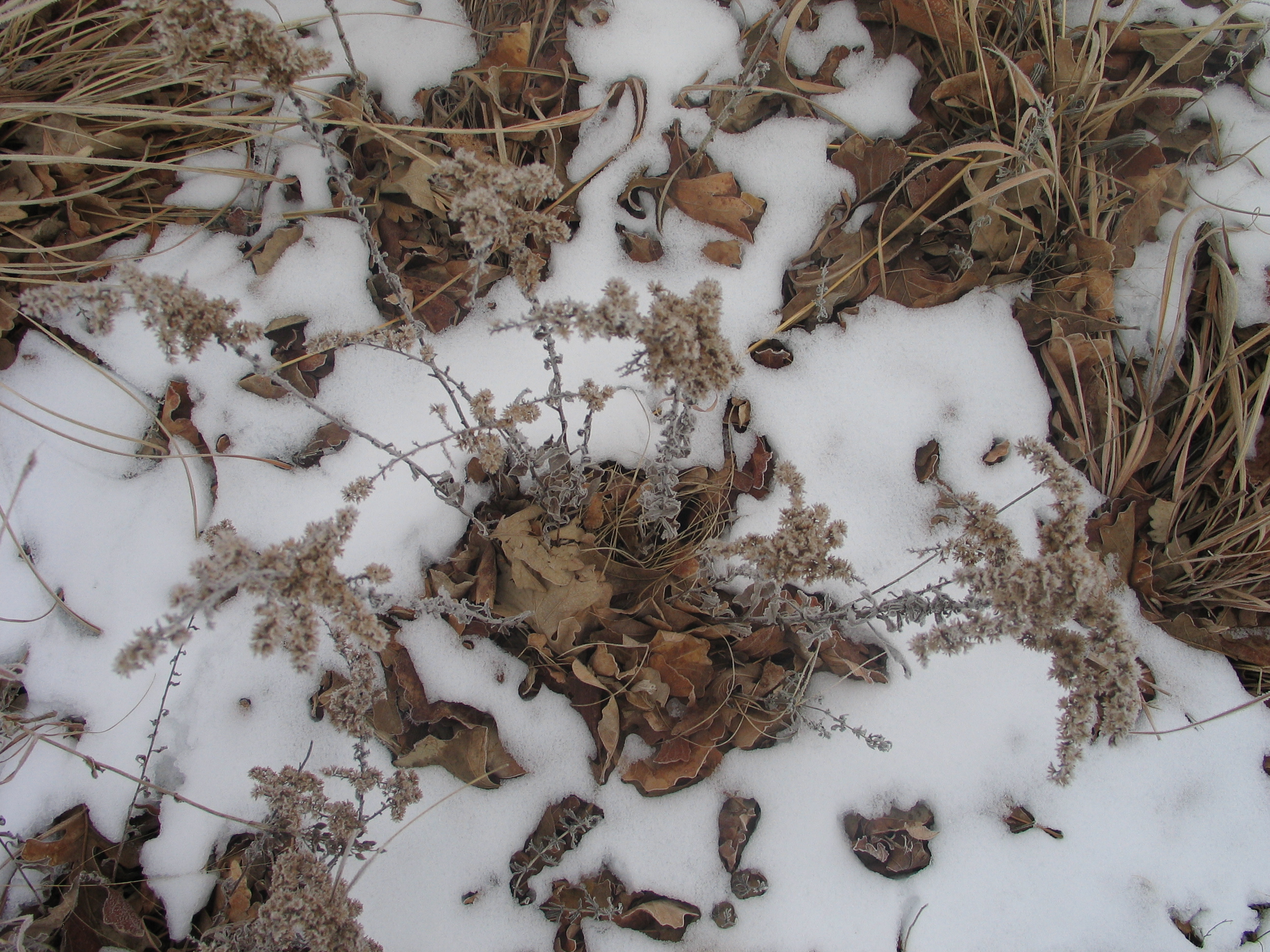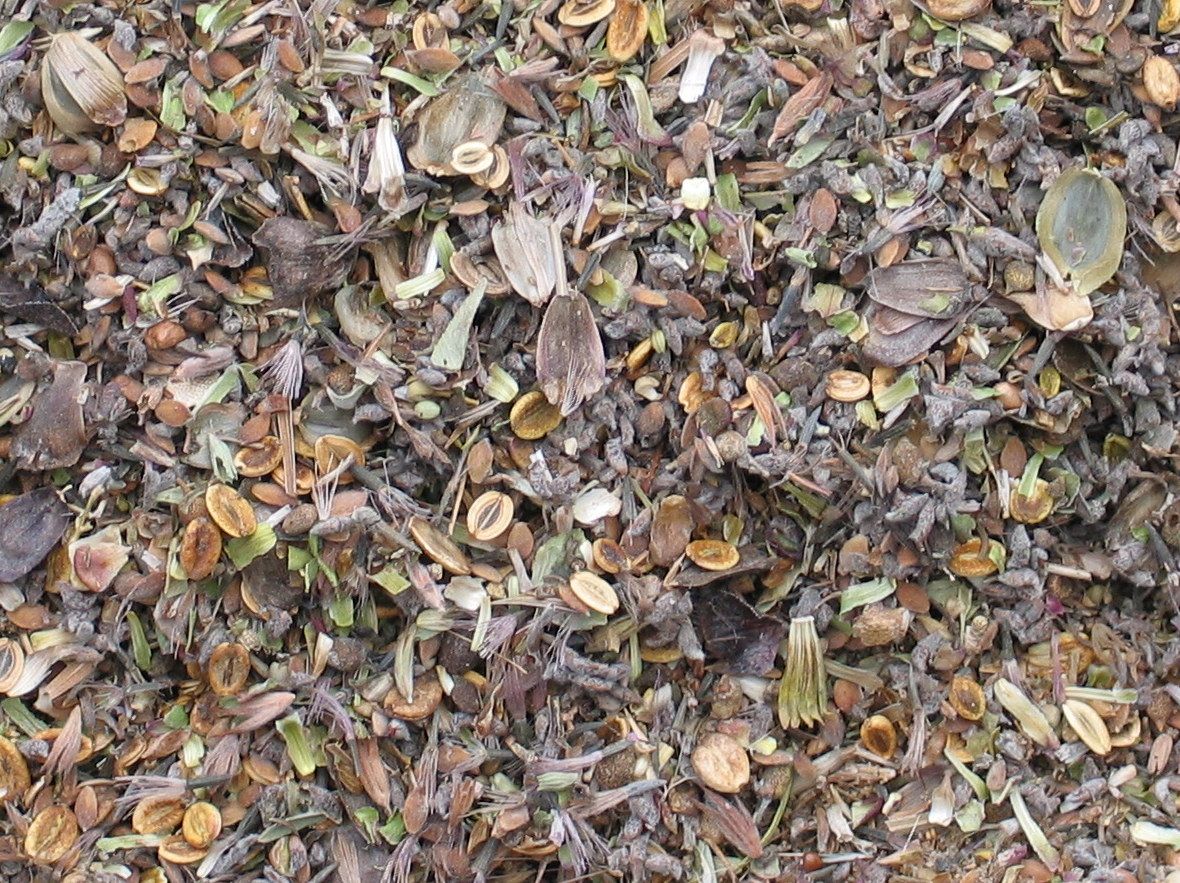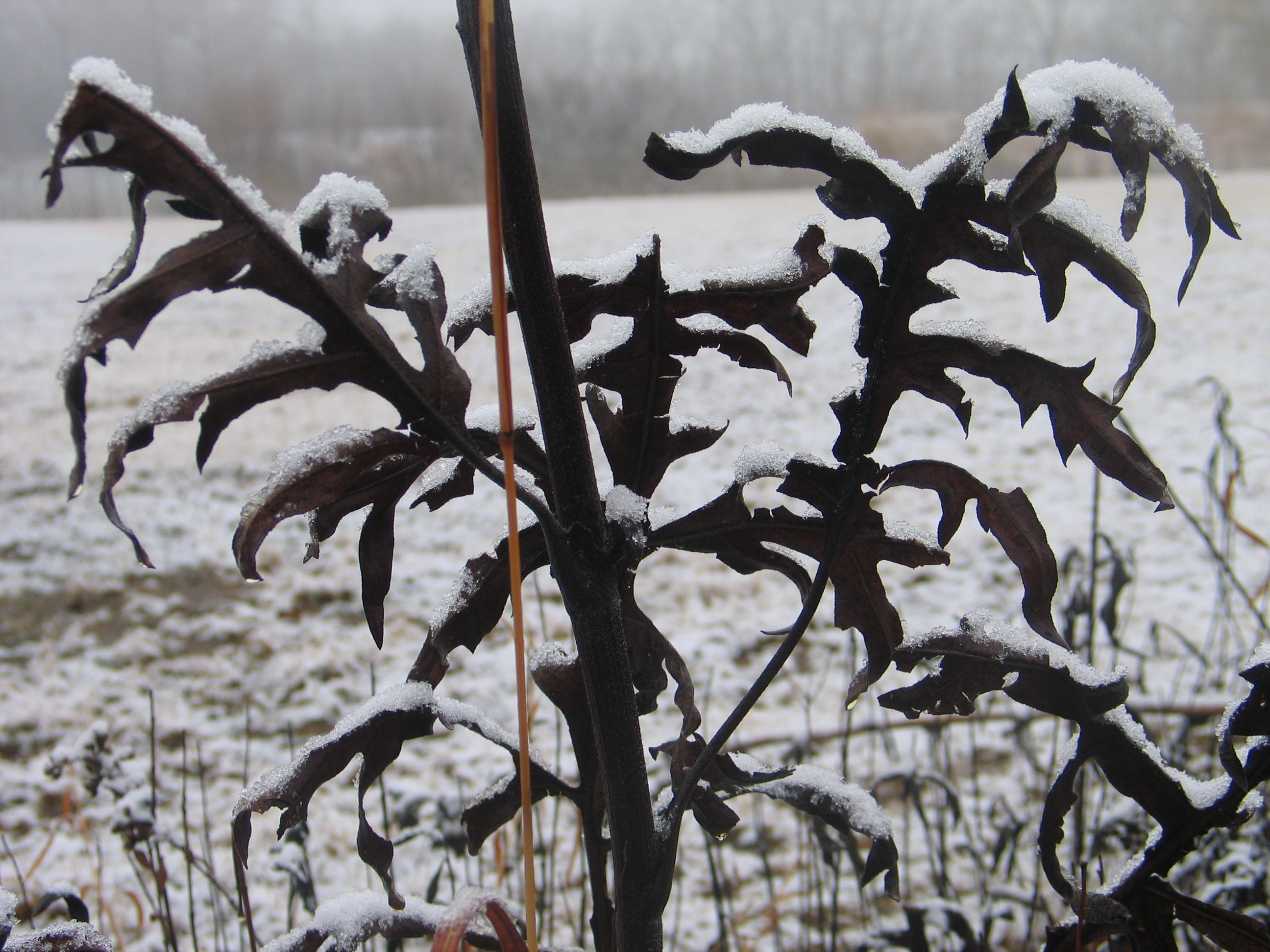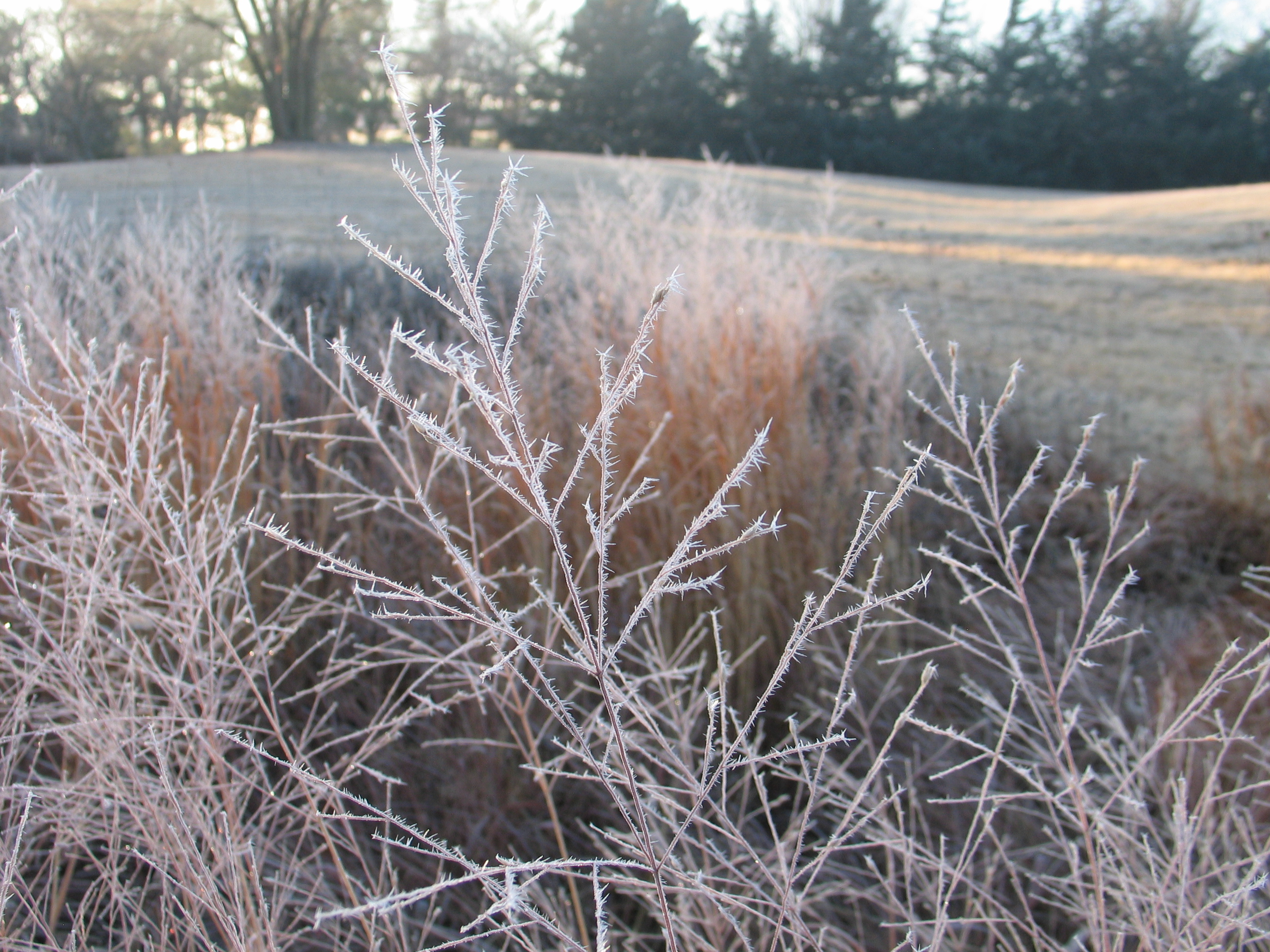Temperatures are cold, hours of darkness are long, and January is a nice time to observe the following beneficial features of a winter prairie garden.
- Habitat for micro-wildlife – Insect eggs persist and survive on residual vegetation – a good reason for leaving thatch on site when cutting it in the spring. For animals that don’t hibernate or achieve some form of dormancy, extant biomass provides insulation for body heat, protection from wind, and visual cover from predators; seeds provide an important source of food for small birds and mammals, and these animals will eventually feed others in the food chain.
- Vegetation buffer – Dormant plant matter provides an above-ground blanket or biomass buffer that reduces soil moisture loss, and slows changes in temperature. This effect improves chances of winter survival for wildlife, and the roots of living, dormant perennial plants.
- Developing seed bank – Allowing seed heads to persist on site, relax, and drop their seeds builds an inventory of propagules in the soil that can produce new seedlings in the future.
- Aesthetic beauty – Unique textures, variations of drab colors, organic ways of holding ice and snow, and even some landscape “disorder” provide interesting features for traditional yards that generally lack winter interest.
Be sure to enjoy the subtle nuances of the dormant prairie in winter over the next couple of months.
Happy new year,
Brad

